Available starting July 18th on Mycanal, “Les Sirènes d’Ukraine” (The Sirens of Ukraine) is a poignant and gripping documentary by French filmmakers Louis Villers and Alexandra Guiral. The film chronicles the journey of twin sisters Maryna and Vladyslava Aleksiiva, who amidst the chaos of war, try to qualify for the Paris Olympic Games in artistic swimming.
Through this lens, Villers and Guiral capture their unshakable determination and the challenges they face, while also highlighting the resilience of young athletes striving to represent their country on the global stage.
The Story of Maryna and Vladyslava Aleksiiva
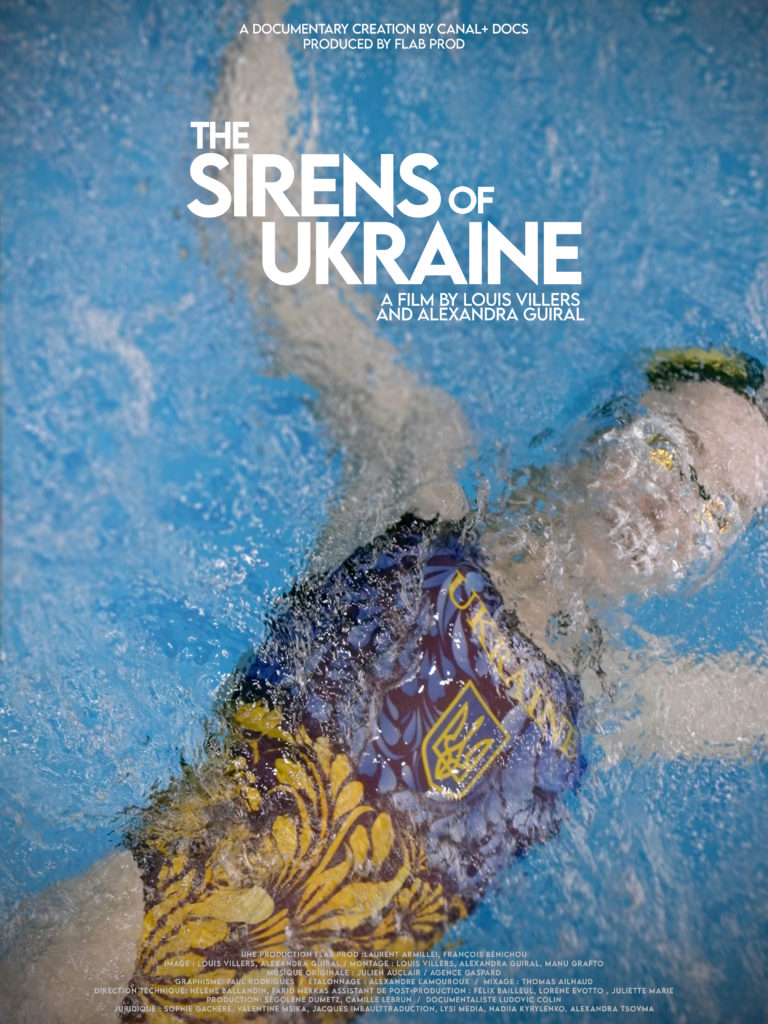 Ukraine, February 24, 2022.
Ukraine, February 24, 2022.
In Kharkiv, not far from the Russian border, twin sisters Maryna and Vladyslava Aleksiiva have to flee their family apartment in the middle of the night, as bombs are falling around them. In extremis, they take with them their Olympic bronze medal, which they had won in Tokyo a year earlier.
Their escape ends in the west of the country, where the Ukrainian team eventually meets up before heading for Italy. After six months of taking refuge abroad, they decide to return to Ukraine and are now training in Kyiv, as the situation in Kharkiv is still too dangerous.
From then on, they are only working towards a single goal: to take part in the Paris 2024 Olympics. The road to the Games looks however a lot more complicated than expected; the swimmers had no idea of the extent to which the war would change their lives and their path to qualification.
Louis Villers and Alexandra Guiral met Maryna and Vladyslava in March 2023 in Kyiv. They filmed them and the Ukrainian artistic swimming team for a year, all the way to qualification for the Olympics. Despite bombings, air-raid alerts, power cuts, freezing pool water and endless journeys to the competitions, the motivation of each of these athletes remained unwavering.
A sports journey in the midst of war
In both Kyiv and Kharkiv, the training sessions are punctuated by air-raid alerts heard up to six times a day. Like all artistic swimmers, the Ukrainian athletes train an average of eight hours a day, perfecting their choreography and tirelessly rehearsing their movements. Time for distraction and rest is therefore precious, when it’s not interrupted by bombardments.
In Ukraine, people are doing their utmost to continue living normally, even though war is everywhere. It’s the twins’ manicurist confessing that she hasn’t heard from her husband, who has left for the battlefront. It’s their swimsuit designer listing the fabrics she’s missing to make their new suits due to a lack of deliveries. It’s the curfew in Kharkiv, the power cuts, and all the soldiers they meet on leave or in funeral processions in Kyiv.
Overseas, war follows them too. When they need to stay focused on their performance, they are sometimes awakened in the middle of the night by their phone’s air-raid alerts. Whether in Montpellier, Japan or Qatar, every time there’s bad news, they worry about those back home.
With this movie, Villers and Guiral wanted to show the life of a team of athletes training in a country at war, but also to tell the everyday story of young women who continue to live and dream.
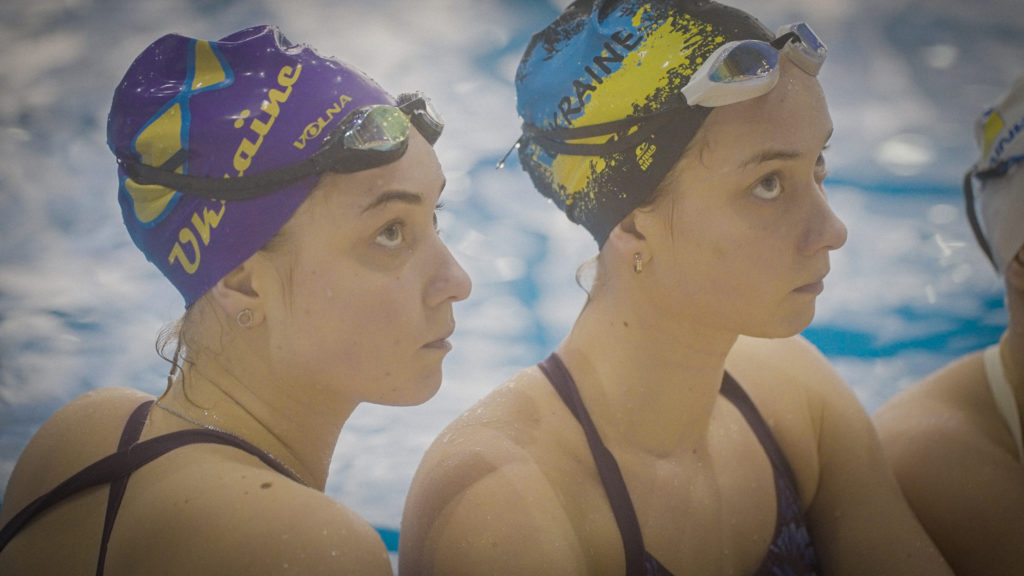
Interview with Louis Villers and Alexandra Guiral
- How did the film come about?
Since the beginning, we had wanted to bear witness to this war and the way Ukrainians are living it from the inside. There’s the war as we see it from abroad, with the headlines, figures and videos of destruction, and then there’s the experience of civilians.
Through the eyes of the Aleksiiva sisters, we bring a new perspective to this conflict. What’s more, the fact that they are athletes enabled us to add other angles to the film: the training conditions for top-level athletes in a country at war, the question of how their country is represented on podiums abroad, the question of Russian participation in the Paris Olympics, and also the difficulty for any Ukrainian to leave the country.
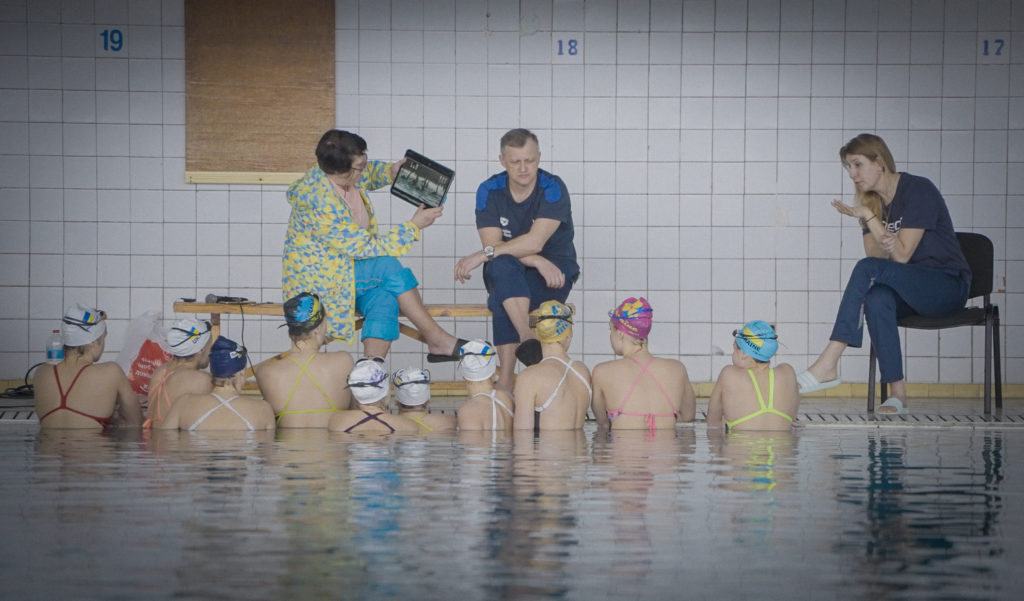
Artistic swimming is a highly visual sport, and a sport that is unfortunately little-known. We wanted to show the grace of it, but also the demands and strength it requires. How did they find the desire and discipline to continue perfecting all their routines, when their country is hit almost every day? It remains a mystery, as beautiful as their sport. In this respect, this documentary is at once a film about young people in wartime, top-level athletes and artistic swimming.
- Tell us more about how you made the shooting of this movie possible.
The shoot lasted a year, with several trips to Ukraine and competitions abroad (Montpellier, Japan, Qatar, Paris). Two of us went out with one camera each, so we were always ready to capture something. Maryna and Vlada very quickly got used to the cameras, or rather, they very quickly forgot about them. That meant that on several occasions, we were able to disappear completely behind our lenses to let the images live.
We were also surprised to find that the Ukrainians themselves said very little about their fears and feelings regarding the duration of the war. At times, our cameras were an opportunity for them to open up and to confide about the war in an unprecedented way.
- What were the most memorable moments while shooting this movie?
First of all, we were surprised when we arrived in Ukraine for the first time to find that life was going on almost as before the war (at least in Kyiv, far from the front line). On the surface, everything was normal: most shops were open, people continued to work and to stroll with their children through the Kharkiv Zoo in the middle of summer, just a few weeks after the start of the Ukrainian counter-offensive.
Even if it’s impossible to forget this war – if only every time an air raid alarm sounds – the Ukrainians we met try to take the situation with a great deal of distance. In the face of the almost-constant threat, Maryna and Vlada always seemed to minimize the risk of bombing and the danger of the situation.
In that sense, one of the most striking moments was that of the national championships in Kyiv in December. We witnessed such a ludicrous situation where the swimmers had to continue their competition, even though an air threat had been declared over the whole of Ukraine and three Russian fighter jets were flying over the capital.
The public was evacuated and all those close to the athletes were forced to follow the competition from a surveillance screen in the basement of the pool. It was even more striking as this was one of the only opportunities for the swimmers’ fathers and boyfriends to support them from the stands, since all Ukrainian men between the ages of 18 and 60 are now forbidden to leave the country because of the mobilization.
- What difficulties did you encounter over this year of shooting?
The first difficulty was the travel time to get to Ukraine. Since the start of the war, the airspace has been closed, so you have to take a train from Poland to get to Kyiv. In all, from Paris, it takes around 20 hours to travel to Kyiv or Kharkiv. This gave us a taste of what the swimmers experience when they have to leave their country to compete abroad. Otherwise, filming was surprisingly easy, and we were made to feel very welcome by the twins’ family and their teammates.
The second difficulty was the language barrier. While we easily communicated in English with the twins, we often asked them to speak in Ukrainian so they could better expand on their thoughts. And of course during each moment of life with their loved ones, they also spoke in their language. We were sometimes surprised to discover the topic of their conversation once we’d get back to Paris!

- It’s near the end of the movie, in their hotel room in Doha after the World Championships, that the two sisters really open up. How come it wasn’t possible before that night?
Indeed, another one of the difficulties of this project was to get them to talk freely, to ask them about their fears, about the struggles they encounter in their sport but also outside it. For a year, we saw them training in harsh conditions, worrying about their loved ones and the future of their country. But when we actually asked them about their feelings upfront, it was hard to get an answer. And that’s how war changes minds.
As we filmed Maryna and Vlada, we realized that there was almost as much meaning in what they told us as in what they did not. We learned to decipher their omissions. And it was only in Doha that they finally opened up about just how difficult life in Kharkiv is, and how impossible it is for top-level athletes to train there in good conditions for the Olympic Games.
- The film ends with the Aleksiiva sisters finding out they are qualified for the Paris Olympics. What’s next for them, in your opinion?
Yes, the World Championships in Doha were their last chance to qualify for the Olympic Games in Paris. After several twists and turns, only the duet has made it and will therefore represent Ukraine this summer in artistic swimming.
Over the course of filming this movie, we learned how an athlete’s career can be turned upside down from one day to the next. They’ve achieved their primary goal of taking part in the Paris Olympics, but afterwards they’ll have to think again about their sporting future. Will they continue to train like this, decide to put their careers on hold, become coaches, mothers or something else?
In any case, they’ll be in Paris on August 9 and 10 at the new Olympic Aquatic Centre in Saint-Denis.
Watch Les Sirènes d’Ukraine now on Mycanal.
ARTICLE BY CHRISTINA MARMET
All photos: Louis Villers & Alexandra Guiral
If you’ve enjoyed our coverage, please consider donating to Inside Synchro! Any amount helps us run the site and travel costs to cover meets during the season.

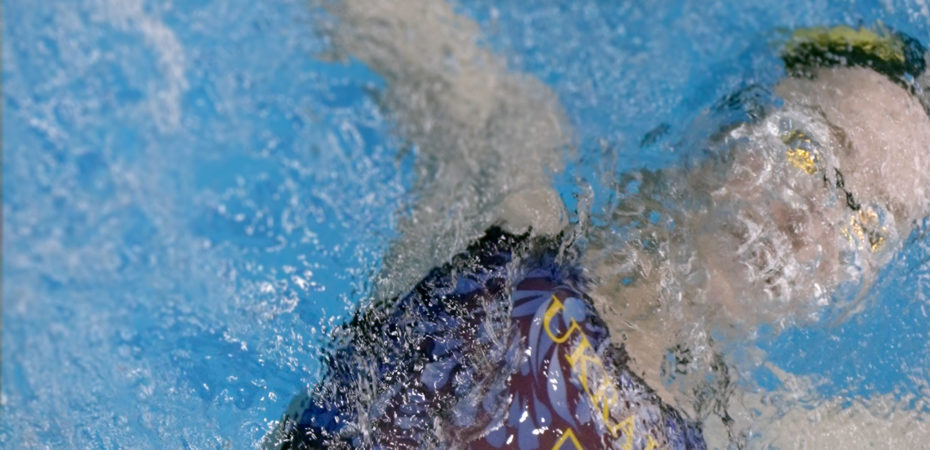
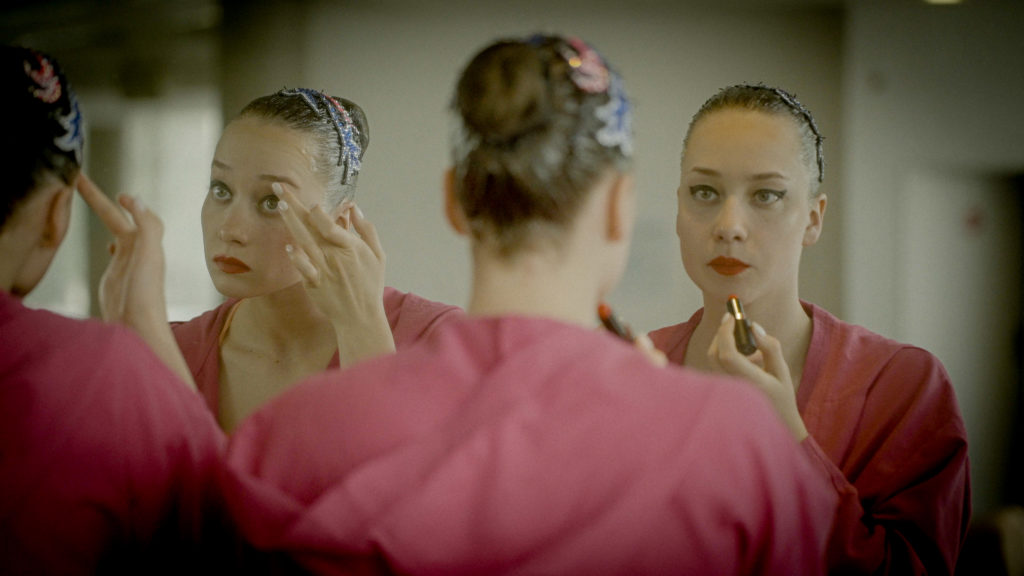
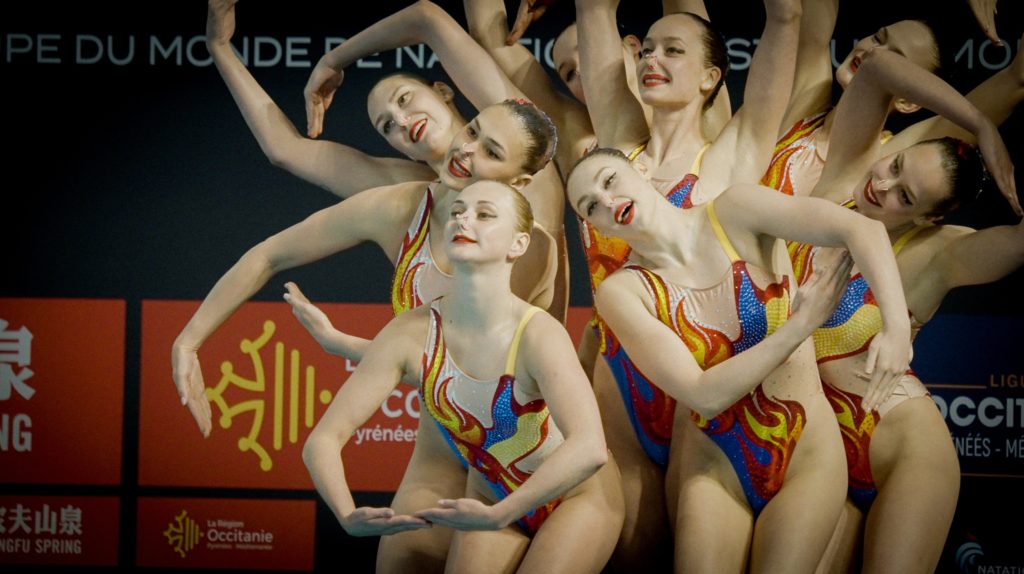
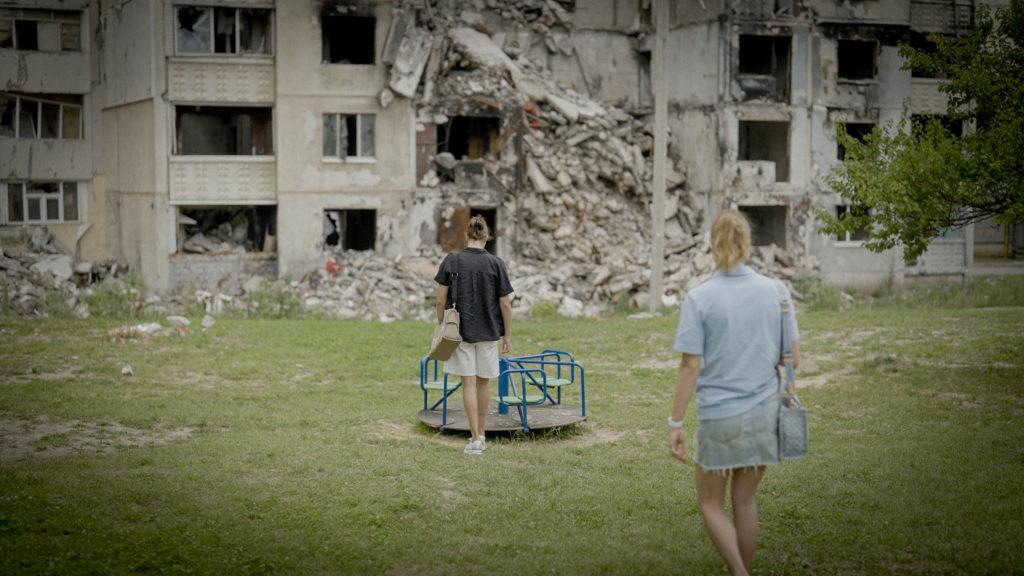

[…] “З самого початку ми хотіли стати свідками цієї війни та того, як українці її переживають зсередини. Є війна, якою ми бачимо її з-за кордону, із заголовками, цифрами та відео руйнувань, а також є досвід цивільного населення. Очима сестер Алексіївих ми вносимо новий погляд на цей конфлікт. Ба більше, той факт, що вони спортсменки, дозволив нам додати до фільму інші ракурси: умови тренувань спортсменів вищого рівня в країні, яка воює, питання про те, як їхню країну представляють на подіумах за кордоном, питання участі росіян на Олімпіаді в Парижі, а також труднощі для будь-якого українця виїхати з країни”, – розповіли режисери в інтервʼю Inside Synchro. […]